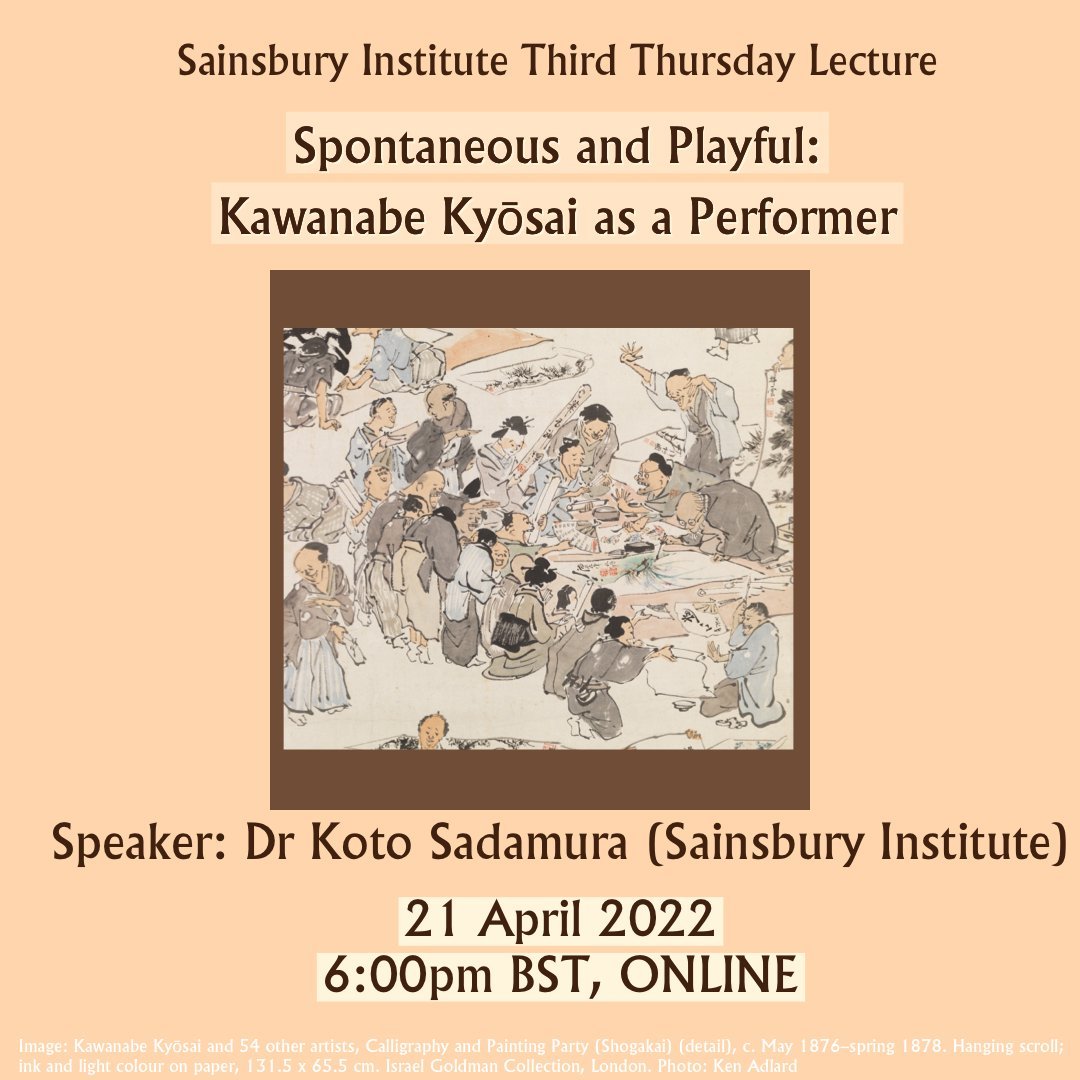Third Thursday Lecture: ‘Spontaneous and Playful: Kawanabe Kyōsai as a Performer’ by Dr. Sadamura Koto (2022年 4月 21日)
©2022 Dr. Sadamura Koto
Dr. Simon Kaner introduced this month’s Third Thursday lecture, commenting on the cherry blossoms blooming outside the SISJAC building in The Close, Norwich. He introduced Dr. Sadamura Koto, the Lisa and Robert Sainsbury fellow and expert on Kawanabe Kyōsai, the subject of a new exhibition at the Royal Academy of Art in London, which she curated.
Dr. Sadamura began with a brief introduction on the life of Kawanabe Kyōsai (1931-1889), who performed sekiga, or the art of spontaneous painting. She explained that this art of drawing whatever came to the artist’s mind demonstrated his playfulness and personality. HE began to learn to draw at age six, under Utagawa Kuniyoshi. At nine, he was moved to the Kano School, the official art school to the Shogunate, and he learned how to draw with ink which was a speciality of the school, as well as drawing scenes, deities and traditional styles found on shoji screens. Eventually, due to the decline of the Shogunate and the Meiji Restoration, he began to focus on social satire and ukiyo-e.
He was an avid practitioner of a more eclectic, Western-style of art and he became both successful and celebrated. She specifically mentioned a painting on a crow for 100 yen, which was an extortionate amount for the period, arguing the cost was not just for the painting but also for his years of expertise and skill. The piece was eventually purchased for the requested amount and is still owned by the same company today. He died of stomach cancer at his home in 1889.
Dr. Sadamura then went into deeper depth into shogakai, parties at which calligraphy and spontaneous painting became an event, including the sale of art produced. They eventually became popular events, compatible with modern comic conventions or fundraising dinners. The popularity of the performers meant a large turn out, from around 150 to 1500 at the height of its popularity. Often held at restaurants, attendees paid an admission fee and could then approach their favourite artists for a custom drawing.
She showed an example of a newspaper clipping advertising both ‘old man’ Kyōsai and his seventeen year old daughter, who would be painting in a comic style handed down to her by her father. There was also mentioned of an image described as a ‘white-robed Kannon’ Bosatsu, as well as Kyōsai doing around a thousand planned drawings during the course of the party.
There was also discussion of collaboration between many artists, as well as a focus on drinking, including examples of sober and drunk paintings side by side. However his fondness for sake was a key part of his art, especially for inspiration when it came to artists in Japan and China. However there was an incident in 1870, after drinking, where Kyōsai was arrested. Though there is no official record of the punishment (believed to be fifty lashes) or the artwork at the centre of the commotion.
The talk also focused on the interplay between western artists in Japan attempting sekiga, as well as a quick overview of the exhibition space, which runs at the Royal Academy until June 19th. The talk concluded and there was a short Q and A session.
The full talk is below:

